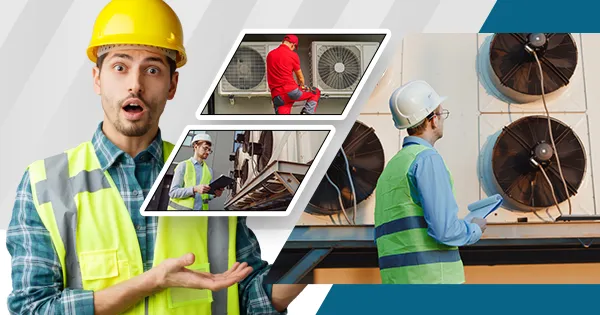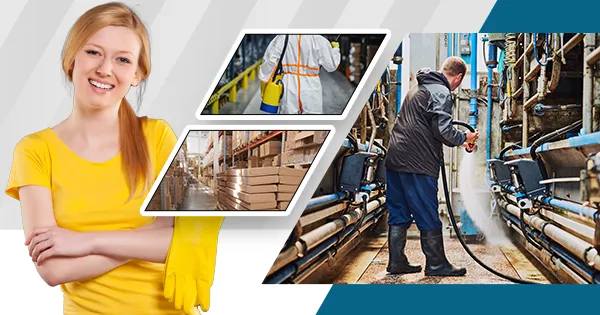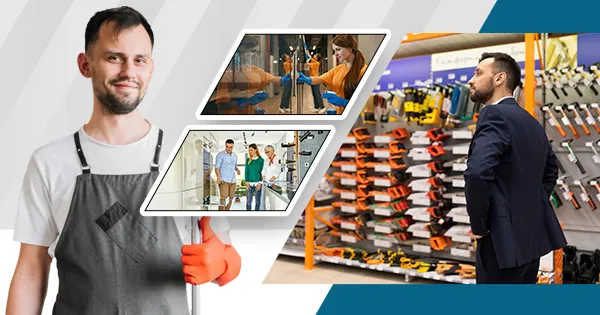Sustainable buildings are structures that are designed, constructed, and operated in an environmentally responsible and resource-efficient manner. These buildings aim to minimise their environmental impact while promoting a healthier living environment for occupants. Sustainable buildings take into account factors such as energy efficiency, water conservation, indoor air quality, and the use of sustainable materials.
The importance of sustainable buildings cannot be overstated. Buildings are responsible for a significant portion of global energy consumption and greenhouse gas emissions. By implementing sustainable practices in the design, construction, and operation of buildings, we can reduce our environmental impact and contribute to a more sustainable future.
The Role of Maintenance Programs in Sustainable Buildings
Maintenance programs play a crucial role in ensuring the sustainability of buildings. Regular maintenance is essential for the longevity and efficiency of building systems. By properly maintaining these systems, we can prevent breakdowns, reduce energy consumption, and minimise waste.
Regular maintenance helps identify and address issues before they become major problems. For example, by regularly inspecting HVAC systems and cleaning or replacing filters, we can ensure that they are operating at peak efficiency. This not only reduces energy consumption but also extends the lifespan of the equipment.
Energy Efficiency: How Maintenance Can Reduce Energy Consumption?
Maintenance plays a significant role in improving energy efficiency in buildings. By regularly maintaining and optimising building systems, we can reduce energy consumption and lower utility costs.
One example of how maintenance can improve energy efficiency is through the regular inspection and cleaning of HVAC systems. Dirty filters and coils can restrict airflow and reduce the system’s efficiency. By cleaning or replacing filters regularly, we can ensure that the system is operating at its full capacity.
Another example is the maintenance of lighting systems. By replacing outdated incandescent bulbs with energy-efficient LED bulbs and regularly cleaning fixtures, we can significantly reduce energy consumption.
Water Conservation: The Importance of Regular Maintenance
Water conservation is another critical aspect of sustainable buildings, and maintenance plays a crucial role in achieving this goal. By regularly maintaining plumbing systems and fixtures, we can identify and fix leaks, reduce water usage, and prevent water wastage.
Regular maintenance tasks such as checking for leaks, repairing dripping faucets, and replacing faulty valves can help conserve water. Additionally, installing low-flow fixtures and aerators can further reduce water consumption without compromising performance.
Indoor Air Quality: How Maintenance Can Improve Health and Comfort?
Indoor air quality is essential for the health and comfort of building occupants. Poor indoor air quality can lead to various health issues, including respiratory problems, allergies, and asthma. Regular maintenance can help improve indoor air quality by ensuring that ventilation systems are clean and functioning properly.
Maintenance tasks such as cleaning air ducts, replacing filters, and inspecting ventilation systems can help remove dust, allergens, and pollutants from the air. This not only improves indoor air quality but also enhances the overall comfort of the building.
Sustainable Materials: Choosing the Right Products for Maintenance
Choosing sustainable materials for maintenance is another way to promote overall sustainability in buildings. Sustainable materials are those that have a minimal environmental impact throughout their lifecycle, from production to disposal.
When selecting cleaning products, for example, it is important to choose eco-friendly options that are free from harmful chemicals and have minimal impact on the environment. Similarly, when replacing building materials or equipment during maintenance, opting for sustainable alternatives can help reduce the overall environmental footprint of the building.
Waste Reduction: How Maintenance Programs Can Reduce Landfill Waste?
Maintenance programs can also contribute to waste reduction in buildings. By implementing proper waste management practices and recycling initiatives, we can minimise the amount of waste that ends up in landfills.
Regular maintenance tasks such as equipment inspections and repairs can help extend the lifespan of building systems and reduce the need for replacements. Additionally, implementing recycling programs for materials such as paper, plastic, and metal can further reduce landfill waste.
Green Cleaning: The Benefits of Using Eco-Friendly Cleaning Products
Green cleaning is an essential aspect of sustainable maintenance programs. Using eco-friendly cleaning products can help reduce the environmental impact of cleaning activities while promoting a healthier indoor environment.
Eco-friendly cleaning products are made from natural, non-toxic ingredients that are safe for both humans and the environment. They do not contain harmful chemicals such as bleach, ammonia, or phosphates, which can contribute to air and water pollution.
Examples of eco-friendly cleaning products include vinegar, baking soda, and hydrogen peroxide. These natural ingredients can be used to clean various surfaces and remove stains without causing harm to the environment.
Maintenance Best Practices: Tips for Creating a Sustainable Maintenance Program
Creating a sustainable maintenance program requires careful planning and implementation. Here are some tips for creating a sustainable maintenance program:
✔️ Conduct Regular Inspections
Regular inspections help identify issues before they become major problems. This allows for timely repairs and prevents further damage.
✔️ Implement Preventive Maintenance
Preventive maintenance involves regularly scheduled tasks such as cleaning, lubricating, and inspecting equipment to prevent breakdowns and extend the lifespan of building systems.
✔️ Train Employees
Proper training is essential for employees to understand the importance of sustainability and how to implement sustainable practices in their daily maintenance tasks.
✔️ Engage Employees
Engaging employees in sustainability initiatives can help create a culture of sustainability within the organisation. Encourage employees to suggest ideas for improving sustainability and recognise their contributions.
Conclusion: The Future of Sustainable Buildings and Maintenance Programs
The future of sustainable buildings and maintenance programs looks promising. As awareness about the importance of sustainability grows, more emphasis is being placed on designing, constructing, and operating buildings in an environmentally responsible manner.
Maintenance programs will continue to play a crucial role in ensuring the sustainability of buildings. By implementing regular maintenance tasks that focus on energy efficiency, water conservation, indoor air quality, and waste reduction, we can contribute to a more sustainable future.
In conclusion, sustainable buildings are essential for reducing environmental impact and promoting a healthier living environment. Maintenance programs are crucial in ensuring the sustainability of buildings by improving energy efficiency, water conservation, indoor air quality, and waste reduction. By implementing sustainable maintenance practices and using eco-friendly products, we can create a more sustainable future for our buildings and the planet.







